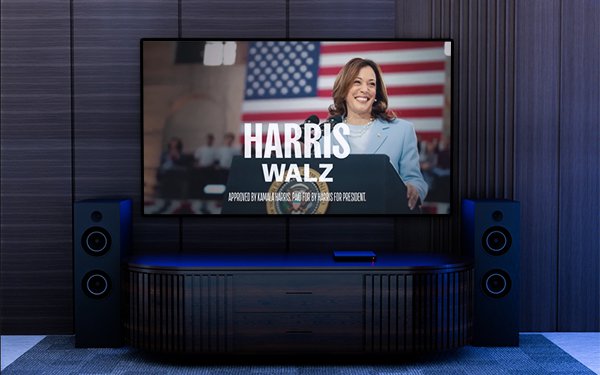Commentary
How Well Is Broadcast Really Doing? Real-Time Political Ad Trend
- by Wayne Friedman , Staff Writer, Yesterday

Is traditional legacy TV -- national and local broadcast and cable -- really feeling better about its advertising performance this political advertising season?
For certain, overall TV dollars have hit higher record levels. Key local TV station groups are benefitting.
At the same time, swing states are getting the lion’s share of what are estimated to be record political advertising dollars.
Daniel Kurnos, media analyst at The Benchmark Co., writes: “Scripps [is] leading the pack versus 2020, up over 30% through the third quarter if AdImpact is to be believed.”
He also cites data showing Sinclair is 25% higher, and that Tegna and Nexstar Media Group are also trending higher than results in 2020.
One seeming positive from all this activity is legacy TV's ability to stem loss in political advertising as it relates to digital-first media platforms:
“Broadcast also seems to have yielded less share than anticipated to social and connected TV (less good for those like Roku and Magnite, although there is bound to be some trickle-down effect), potentially even taking share in total when the dust settles.”
Even then, Kurnos senses that overall trends -- national and local TV -- are difficult to nail down in real-time.
“It is extremely difficult to parse out ad trends this close to an election, but the signs have been pointing to recent underlying softness,” he says.
He is referring to issues of overall “core” advertising activity is -- during the election season, as well as what comes after. For this, he cautions it may be a “mixed bag of nuts... What concerns us is the aftermath and the forward appetite for consumer and advertisers alike.”
In past years, political advertising results could be looked at as an outlier -- especially considering they are spiking ad results every other year.
But no longer -- it’s part of the plan and expectation.
Not only do local TV stations continue to have a solid advertising business when it comes to politics, but the results -- as well as those of steady retransmission revenues -- now yield a smaller share of dependency on core advertising results.
For example, Guggenheim projects Nexstar -- the largest U.S. TV station group -- will see just 29% of its total revenue share coming from core advertising versus 80% back in 2008-2009.
Political marketing is a major part of this change.
And even with the advent of digital media -- especially social media -- looking to take away more advertising from legacy TV media, TV stations are holding their own.

No comments:
Post a Comment